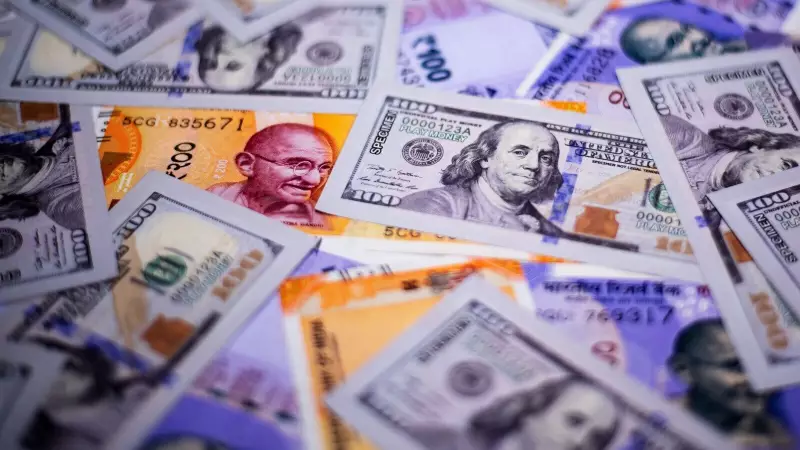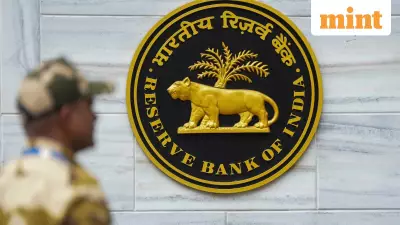
Rupee's Challenging Year: From ₹83.3 to ₹88.6 Against Dollar
The Indian rupee has experienced significant pressure throughout 2025, declining from around ₹83.3–83.5 in January to approximately ₹88.6–88.8 per US dollar by mid-November. This depreciation represents one of the currency's most challenging periods in recent years, reflecting both global economic shifts and domestic market conditions.
Multiple factors have contributed to the rupee's weakness, including a robust US dollar, elevated crude oil prices, and consistent Foreign Institutional Investment (FII) outflows. India's export sector has also faced headwinds from continuing US tariffs and broader international trade tensions that have impacted emerging market currencies.
Trade Deal Optimism Provides Recent Support
In the past week, the rupee has shown signs of recovery driven by positive developments in US-India trade negotiations. The currency fell by 15 paise to 88.65 against the dollar in early trading on Wednesday, primarily due to high crude oil prices and foreign fund outflows. However, forex traders noted that renewed hope surrounding the India-US trade agreement provided crucial support at lower levels.
Tuesday marked a turning point as the rupee began appreciating, benefiting from a weaker US dollar and revived optimism about bilateral trade talks. While the movement remained modest, it signaled a potential shift in momentum after weeks of consistent pressure on the domestic currency.
Expert Analysis: Medium-Term Recovery Expected
Financial experts believe the ongoing US-India trade negotiations could significantly benefit the Indian rupee. Rahul Kalantri, VP Commodities at Mehta Equities Ltd, explained: "A successful US–India trade deal is likely to have a supportive impact on the Indian rupee. Greater market access and increased exports to the US can lead to higher dollar inflows, strengthening the rupee, while improved investor confidence may encourage more foreign investment into India."
However, Kalantri also cautioned that if the agreement results in increased US imports into India, dollar demand may rise and create mild pressure on the rupee. He expects short-term volatility in currency markets due to speculation but maintains that medium-term sentiment should remain positive if the trade deal boosts exports and capital inflows.
MSCI Review Boosts Foreign Investment Prospects
Forex traders have identified another positive factor: the MSCI Review could lead to increased foreign fund inflows. The global index provider MSCI announced the addition of four Indian companies to its Global Standard Index:
- Fortis Healthcare
- GE Vernova T&D India
- One 97 Communications (Paytm)
- Siemens Energy India
Amit Pabari, MD of CR Forex Advisors, commented: "As these passive inflows pour in, they could provide an additional cushion to the rupee in the near term, offsetting any temporary weakness from global uncertainty."
Detailed Rupee Forecasts for Coming Year
Mohit Gulati, CIO and managing partner of ITI Growth Opportunities Fund, provided specific projections for the rupee's performance. Assuming a credible US-India trade agreement is reached, he forecasts INR ₹83–84.5 over the coming year, with short-term fluctuations driven by oil prices, Federal Reserve policy, and portfolio flows.
Gulati explained his cautious optimism: "The forecast reflects a balanced perspective: the deal reduces tail political risk and should lessen the premium on India-specific risk, but it won't eliminate global FX influences. With the Fed remaining the primary force behind INR movements, and India's oil import costs and external financing needs quite significant, expecting a move into the high-70s is optimistic without decisive Fed cuts and sustained, substantial inflows."
Jigar Trivedi, Senior Research Analyst at Reliance Securities, offered a more immediate prediction, suggesting the trade deal could strengthen the rupee toward ₹86.5 per dollar by year-end, provided the agreement effectively addresses tariff issues and ensures smoother trade in services and manufacturing.
Trivedi added that while the trade pact could tilt sentiment in favor of the rupee, sustained appreciation will depend on how quickly both nations translate diplomatic progress into actionable economic reforms. He identified key technical levels, noting that the "USDINR pair may face resistance near 89 level, while support is placed at 86."
The combination of trade deal optimism and structural inflows from MSCI rebalancing suggests the rupee may have found a foundation for recovery after months of depreciation pressure.





